Presentation School, Clonmel
Transition Year Students Search
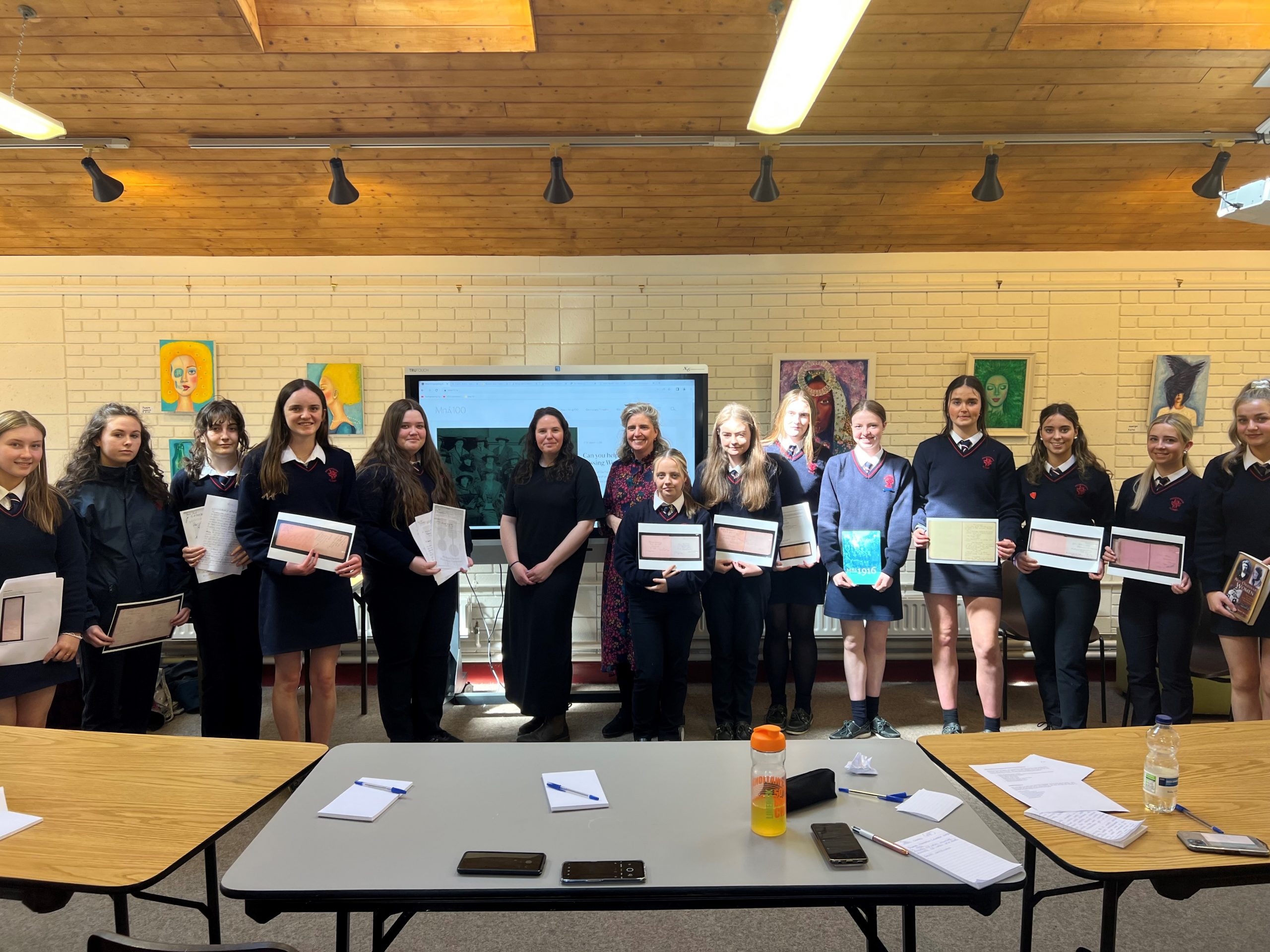
Left to right: Lucy Mahony, Cara Patterson, Rachel O’Dwyer, Jenna Hayes, Chloe Hickey, Kate Nevin, Dr Sinéad McCoole, Amyleigh Norris, Sarah Fitzgerald, Grainne Maher, Millie Hewitt, Eabha Murphy, Rosie O’Reilly, Rachel Fuller, Lucy Hanrahan, Margaret O’Mahoney.
Workshop in Clonmel Library
In May 2023 Mná100 partnered with the Tipperary Decade of Centenaries Programme.
Transition Year students from Presentation Secondary School, Clonmel, Co Tipperary joined Mná100 in Clonmel Library for the research workshop with the assistance of Librarian Paul Devane.
The purpose of this workshop was to give the participating students tools and resources to assist them in the Leaving Certificate. The students focused on the Irish Civil War and County Tipperary.
The mass arrest of women all over the country during the Irish Civil War was the topic for research. Members of Cumann na mBan from Tipperary, who were arrested during the Civil War in 1922 and 1923 were selected as the focus for the workshop.
The students were introduced to Tipperary women who had been imprisoned during the Irish Civil War. Each group was assigned a different woman to research using their phones and library resources. The students were introduced to www.irishgenealogy.ie. Here they could search the birth, death and marriage records. They also used the National Archives census website to see whereabouts the women were in 1901 and 1911, www.census.nationalarchives.ie.
Paul Devane showed the students some of the library’s sources that could help them with their research. They could access sources that required subscriptions free of charge in the library. He visited the website www.irishnewsarchive.com and demonstrated how to look up some of the Tipperary women in the archive.
The students also explored the military pension records held in the in the Military Archives. All of the women’s records have been digitised which allowed the students to easily search them online at www.militaryarchives.ie.
Once the students had gathered all of the pieces of the puzzle, then it was time to put it together and tell the story.
Tipperary in 1923
The starting point was a search in the autograph books from the collection of Kilmainham Gaol Museum.
The autograph books have been digitised and the students found interesting information with the help of Archivist Aoife Torpey and Brian Crowley, Curator of the exhibition on women imprisoned in Kilmainham during the Civil War. You can find out more about that exhibition here.
The students found a number of examples of women from Tipperary who were imprisoned and signed autograph books while they were held there.
Where were the women from?
A search in the autograph books of those imprisoned we find women who come from the town of Clonmel, the farming communities of Lattin, Emly, Bawnmachane, Cloneen, Silvermines, Bansha and Goold’s Cross.
The first group of researchers looked at a woman from Main Guard in Clonmel.
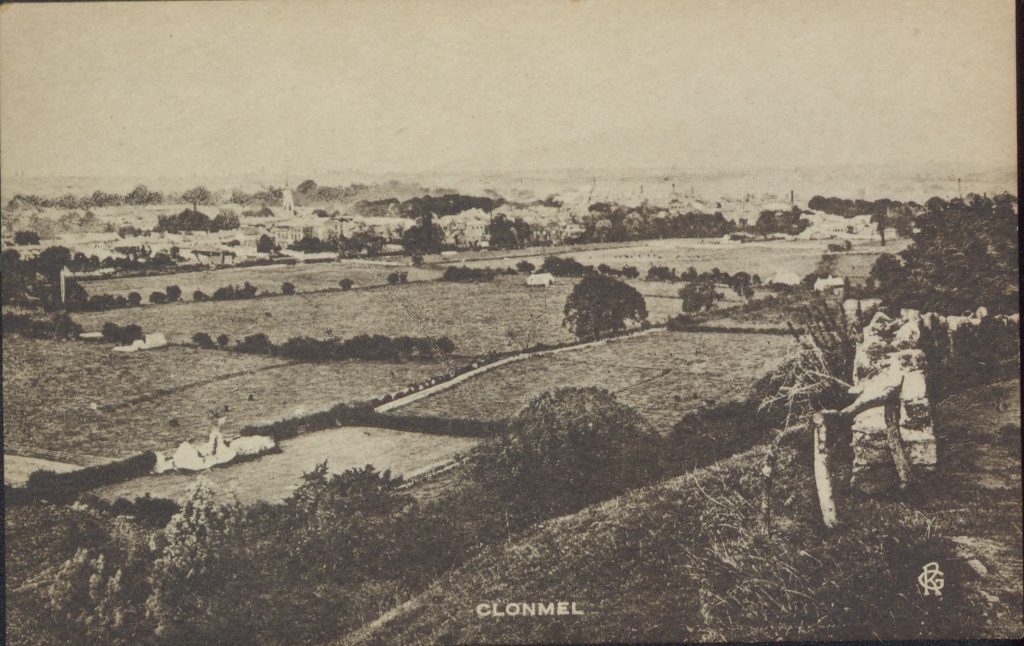
Mary Cooney
Main Guard, Clonmel
Research conducted by Sarah Fitzgerald, Millie Anna Hewitt, Grainne Maher and Amyleigh Norris.
Through their research, the students learned that her full name was Mary Josephine Cooney. She was born in 1879 in Clonmel, County Tipperary and was a daughter of the late Thomas Cooney, and Mrs. Cooney. Her christen name and maiden name could not be found. Mary’s brother was named John (Sean) Cooney and her sister was named Pearl Cooney. The family owned a wholesale and grocer’s and a pub called T. Cooney. They found her death registration on irishgeneology.ie. Mary died on the 31 October 1938. She was 47 years old.

Mary’s funeral was held in Saint Peter and Paul’s church in Clonmel, County Tipperary. She was buried in their family burial ground in Powerstown, County Tipperary.

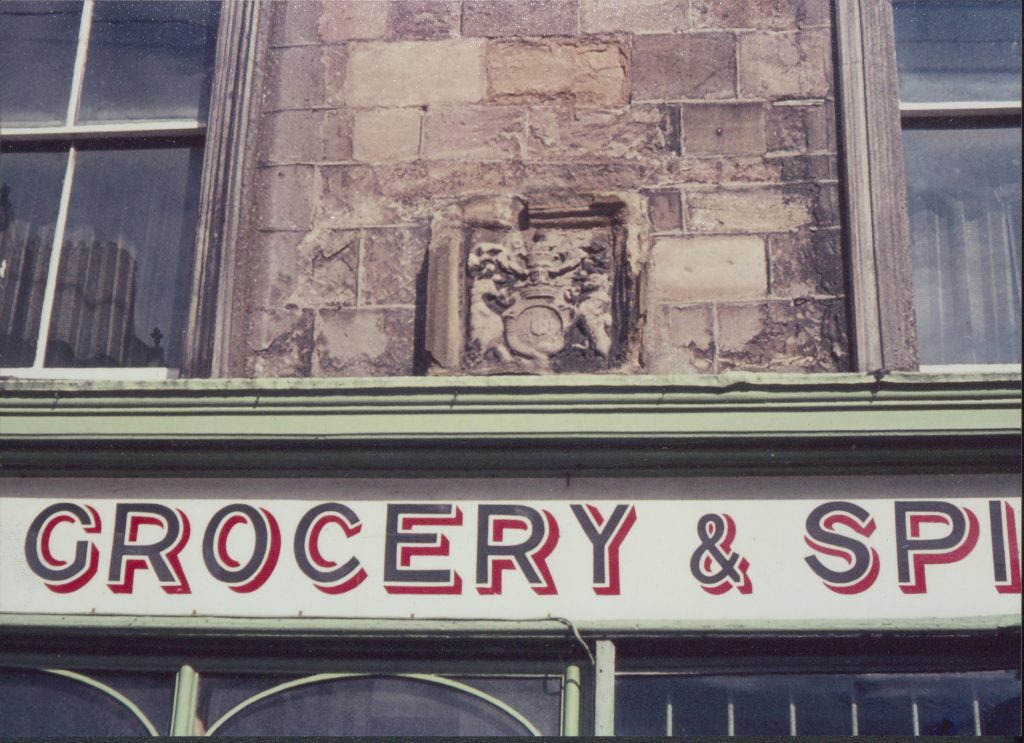
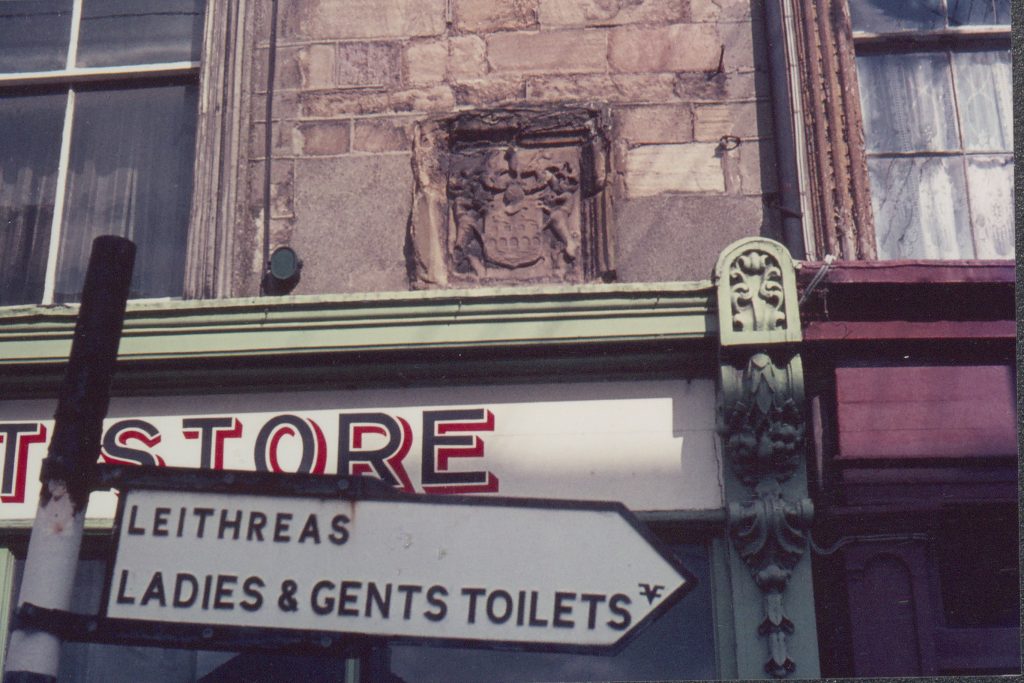
This is a selection of pictures of the Main Guard, 2023 where Mary Josephine Cooney and her family lived.
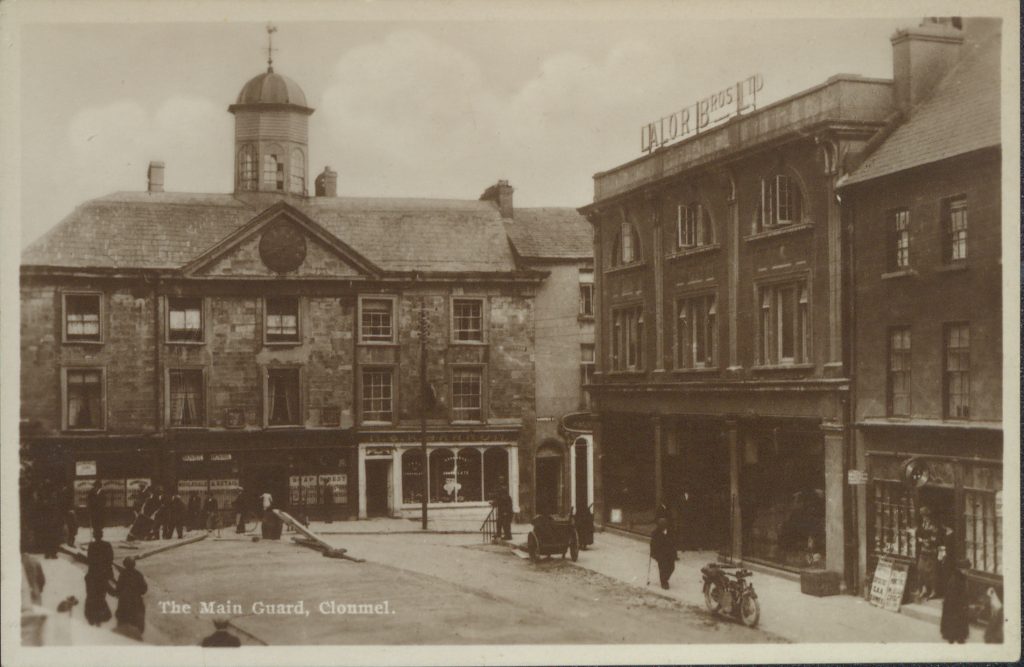
During this project Millie Anna Hewitt, Sarah Fitzgerald, Grainne Maher and Amyleigh Norris photographed the location of the grocery and public house, The Main Guard, Clonmel.
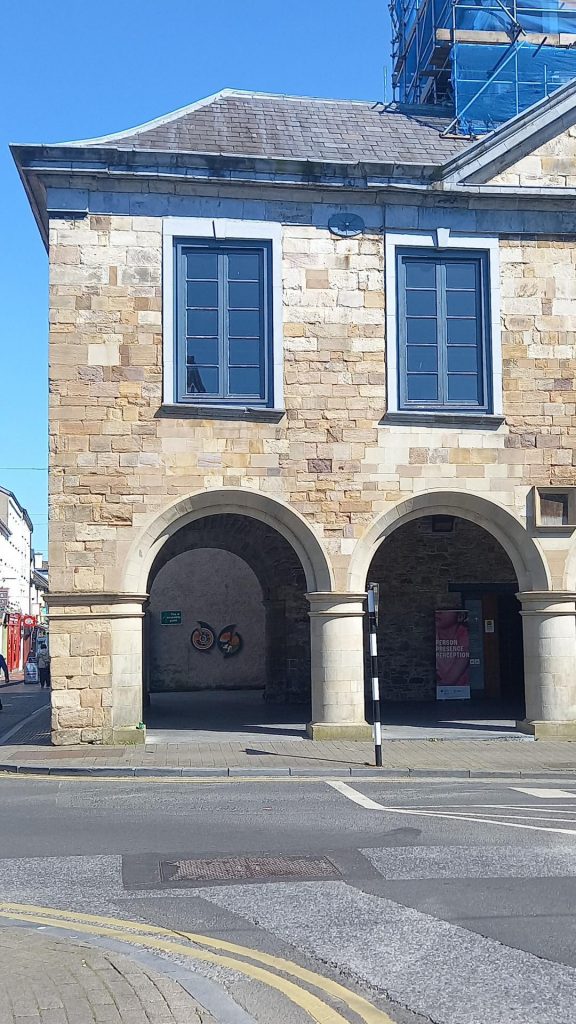
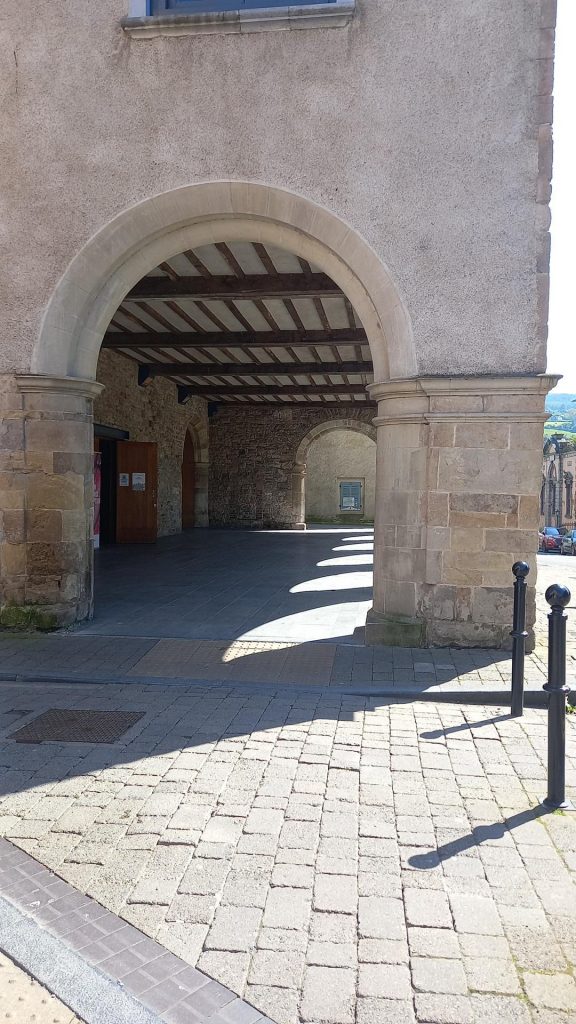
You can see from the above photographs of main guard today, that all traces of the family business is gone.
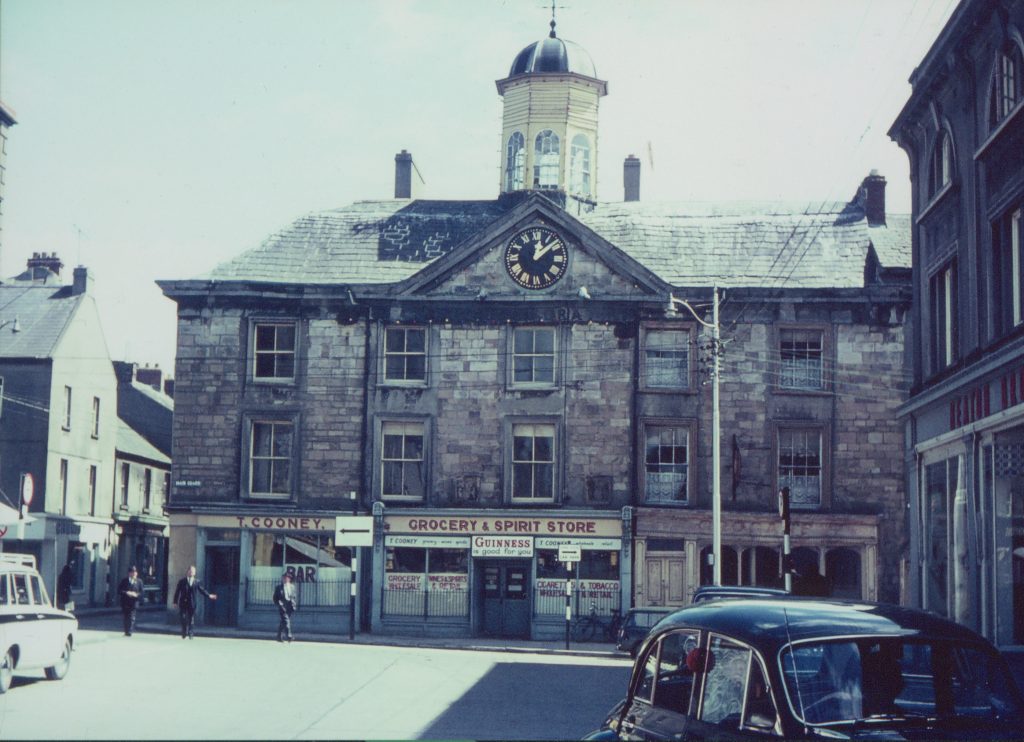
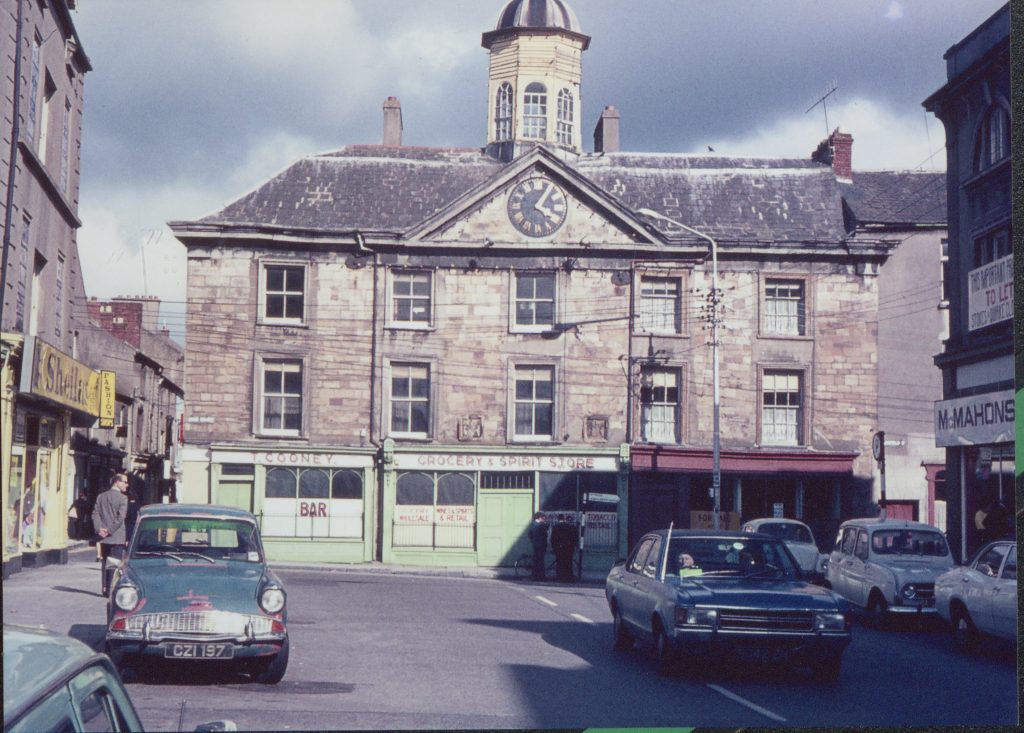
Dr Sinéad McCoole assisted the students to delve deeper into Mary Cooney’s life.
She found that on April 26th 1923 Mary Cooney signed an autograph book while in Kilmainham Gaol, identifying herself with the 3rd Tipperary Brigade.
We can tell Mary became friendly with Kitty and Jenny Coyle, as well as Nellie Fennell and Frances Casey as she signed their autograph books. These were souvenirs for the women of their time in prison. A number of these books have been donated to Kilmainham Gaol Museum, including ones signed by Mary Cooney. There are also copies of autograph books in private collections.
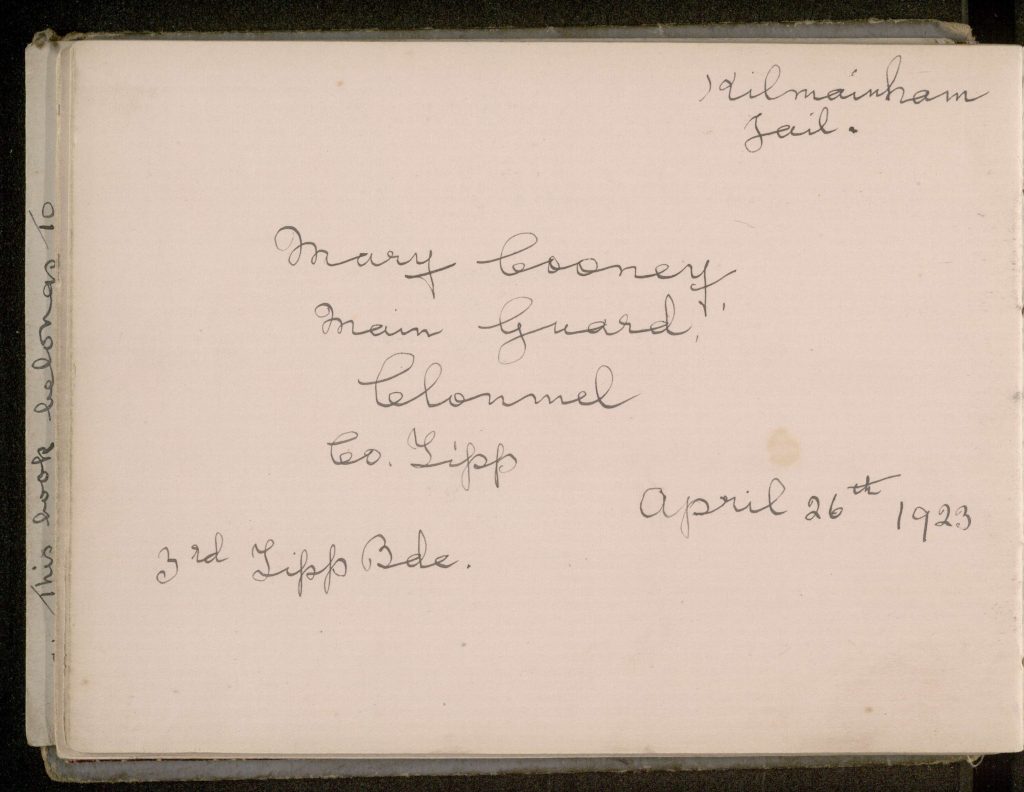
A search in the military pension files located Mary Cooney’s pension application.
She was successful in her pension application as a member of Cumann na mBan from 1 April 1919 to 30 September 1923. She was the President of the Clonmel Branch from its formation in September 1917. She was Brigade Officer Commanding. She served Clonmel in what she described in her pension record as ‘the district.’
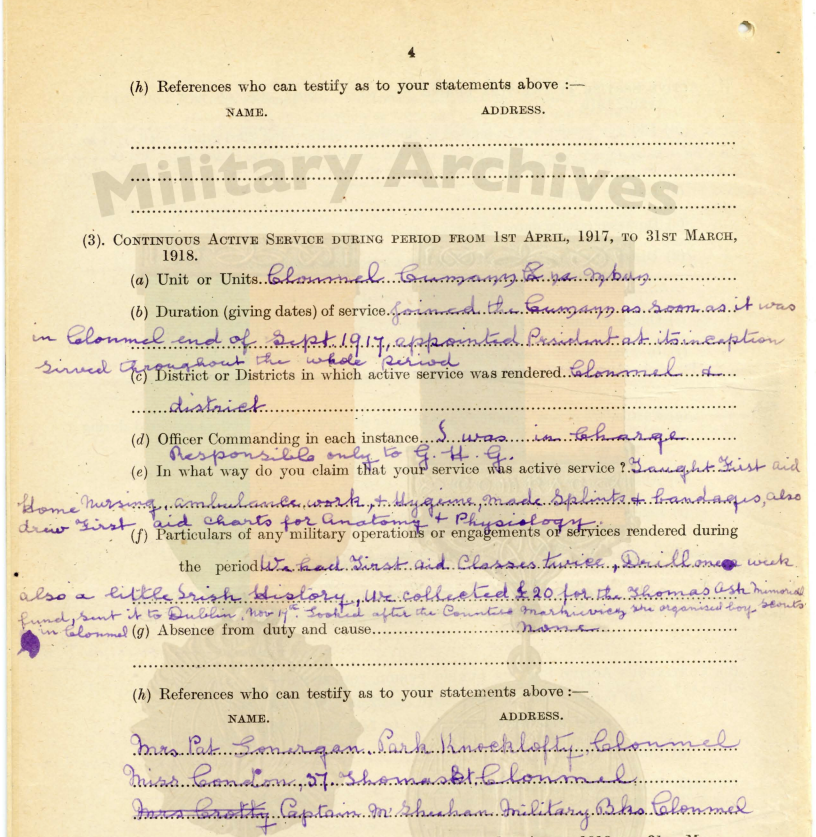
In 1914, she joined the St John Ambulance and sat exams to teach home nursing, -what she called ‘ambulance work’- to Cumann na mBan members of her branch. At the request of Dan Breen, she organised other branches in Tipperary and Waterford. She taught the members to make splints and bandages as part of first aid training and drill. She wrote that she drew up charts in anatomy and physiology. She also taught ‘a little Irish history.’ Later she described that the rooms in her home that they used for meetings were raided by the Royal Irish Constabulary and “their things were taken”.
Mary was also active in Lá na mBan 9 June 1918 and she took part in an anti-conscription rally in Clonmel.
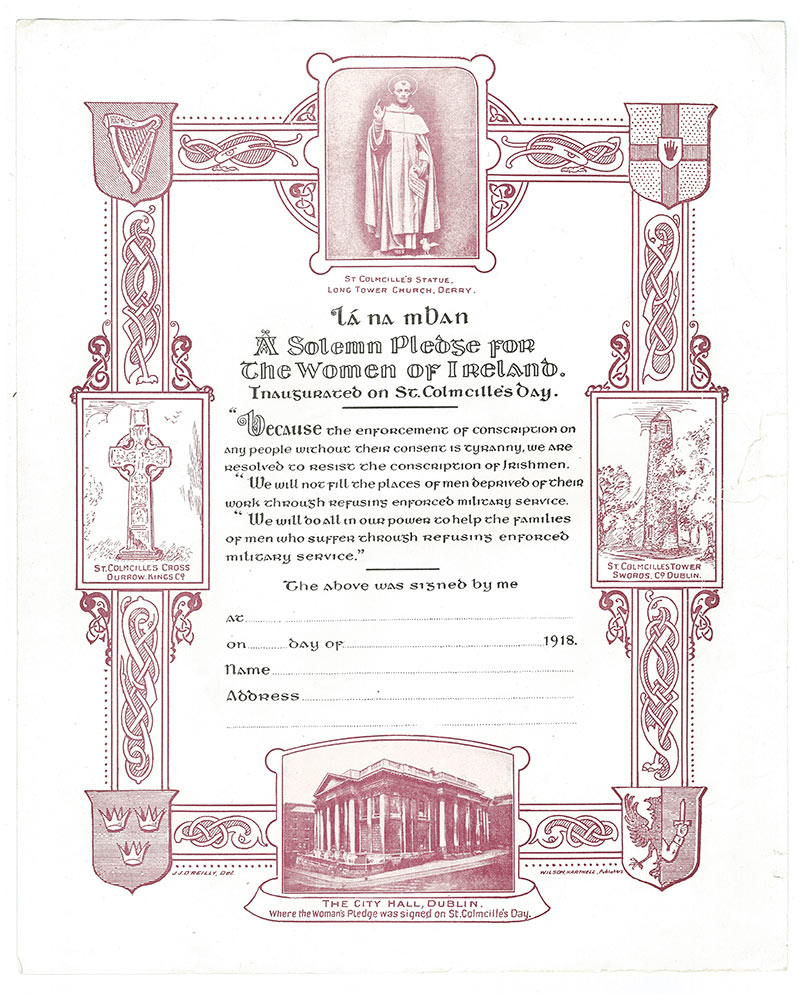
“…Because the enforcement of conscription on any people without their consent is tyranny, we are resolved to resist the conscription of Irishmen. We will not fill the places of men deprived of their work through refusing enforced military service. We will do all in our power to help the families of men who suffer through refusing enforced military service.”
Text from Lá na mBan (above).
During the War of Independence, Mary described her service with the Flying Columns – gathering clothes and food to bring to men on the run. As part of her duties, Mary wrote she ‘knitted socks’ and did laundry. Her house at ‘The Main Guard, Clonmel’ was frequently used by men who were fighting and some weapons were kept there. Her brother Sean was in the IRA and she helped him make munitions. She also transported weapons between Dublin and Tipperary. She stated that the weapons were transported in books, in parts, and that she still had 21 of these containers in her possession. For more information see Clonmel Cumann na mBan.
She also organised branches in south Tipperary – Kilsheehan, New Inn, Powerstown, Grange, Rosgreen, Cahir, Carrick, Newcastle, Fethard, Clogheen, Graigue, and the neighbouring county of Waterford districts of Ballymacarbury and Nire, the valley in the Comeragh mountains. She also brought food and clothing to men on active service. She also tended wounded men.
Seamus Robinson, Ernie O’Malley and Sean Treacy all stayed with the Cooney family in The Main Guard.
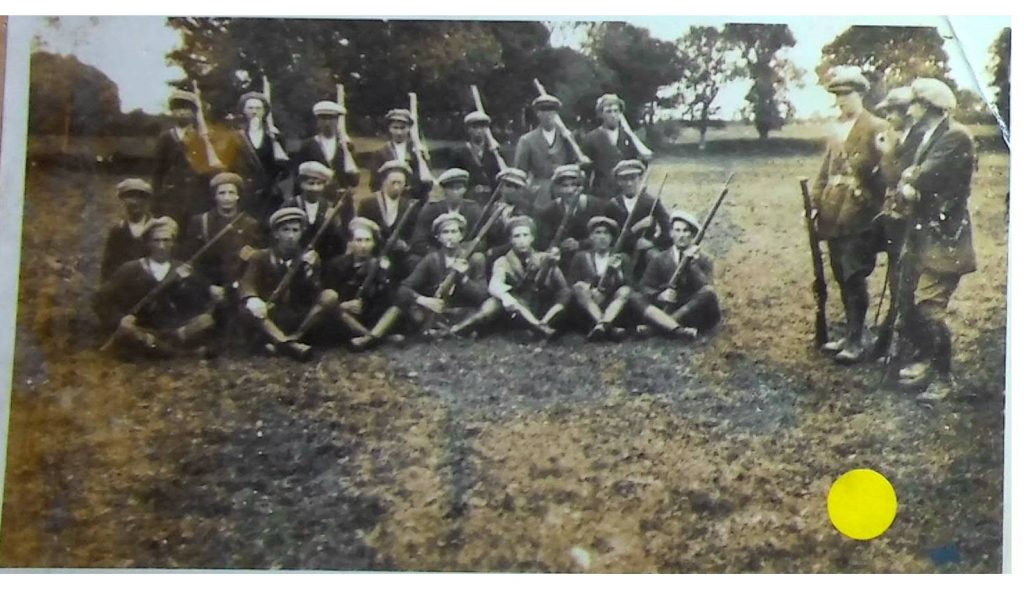
At the start of the Civil War, she was stationed in Clonmel Barracks and remained there until the evacuation on 12 August 1922. On 5 June 1922 Mary organised a review of Tipperary Cumann na mBan and Margaret Skinnider came from Dublin. As Mary wrote ‘all my girls were in it.’
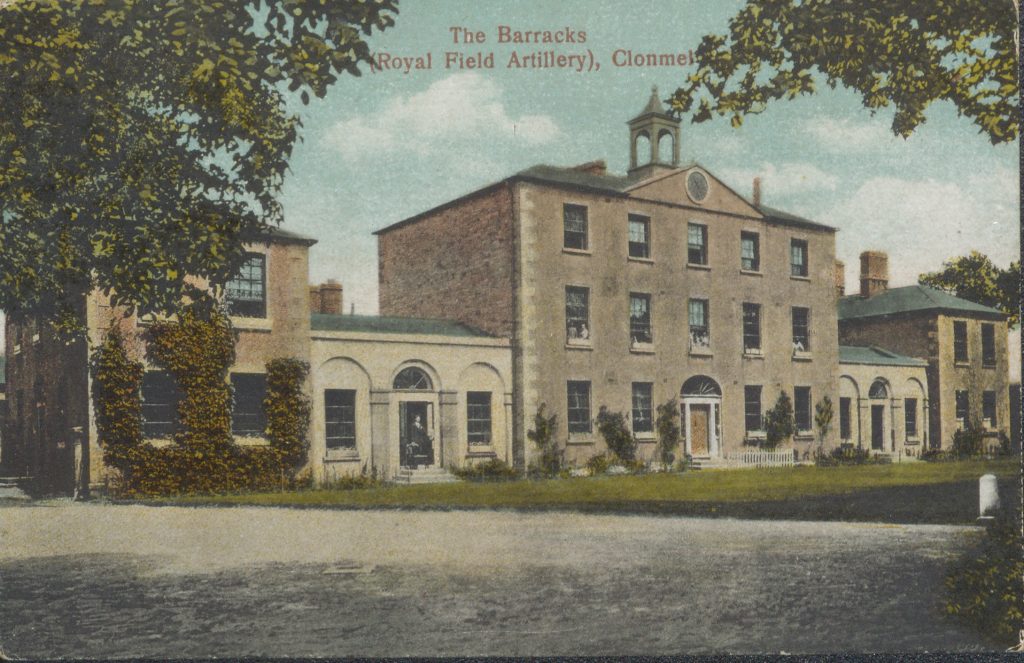
Her house at The Main Guard was used as a dispatch centre for messages from the General Headquarters and the Southern and Western Commands. She claimed to be continually active up to her arrest on 5 March 1923. As a member of the Poor Law Guardians, Mary condemned the executions and recorded that she was arrested shortly after that at home.
She was released from the North Dublin Union on 7 November 1923.
Having first applied in 1935, she was awarded a pension in 1942. As noted on her file Mary died during the verification process. Subsequent communication from the Department was issued to her-next-of-kin, her brother Sean Cooney.
Julia Josephine O’Brien
Silvermines
Research by Rosie O’Reilly and Rachel Fuller
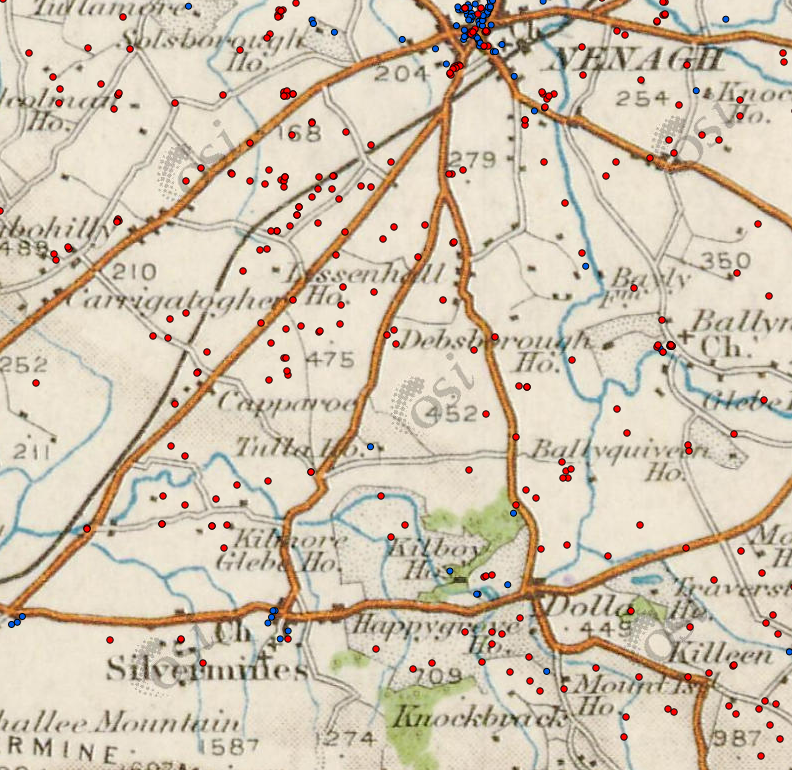
© Tailte Éireann – Surveying.
Rosie O’Reilly and Rachel Fuller found that Julia O’Brien was born on 23 February 1901 to parents John and Julia O’Brien in Silvermines, Kilmore, County Tipperary, in house number 29.
Her mother had been a Ryan before marrying Julia’s father James in 1886.
We can see from the 1911 National Census of Ireland that Julia’s parents were married for 23 years. Her father was born in Tipperary in 1862, he was 59 at the time the census was taken. Her mother was born in Limerick and was recorded as being 46 in 1911. There was an age gap of 13 years between the couple.

Rosie O’Reilly and Rachel Fuller discovered in the 1901 and 1911 census returns was that her father had been a member of the Royal Irish Constabulary.
By the time she was born in 1891, he was a postman. Julia’s brother, Michael J O’Brien, was later recorded as a postman, taking over the position from their father. Julia’s mother was recorded as a housekeeper in both the 1901 and 1911 census. The students also discovered from the 1911 Census that she had 8 living children and that two children had died. Julia’s eldest brother John Josh O’Brien was born in 1889 in Limerick and was 22 in 1911. Her sister, Catherine M., was born in 1890 in Limerick. She was the second eldest, a year younger than Michael. Catherine died between 1901 and 1911.
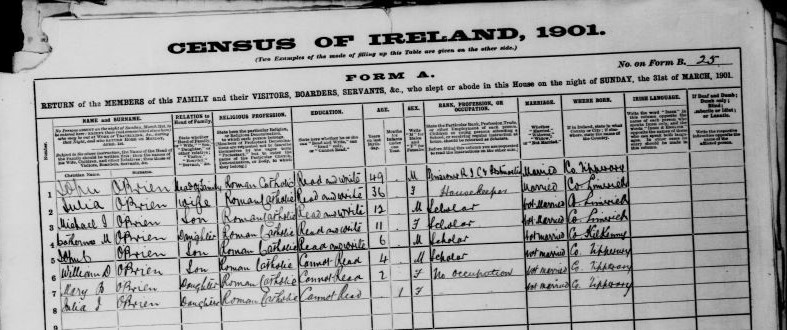
Another brother John Christopher O’Brien was born in Kilkenny in 1895. He was 16 when the 1911 census was taken, just 2 years older than his brother William Denis O’Brien. Julia had two younger brothers, Daniel Simon who was born in 1904 and Thomas, who was only three in 1911.
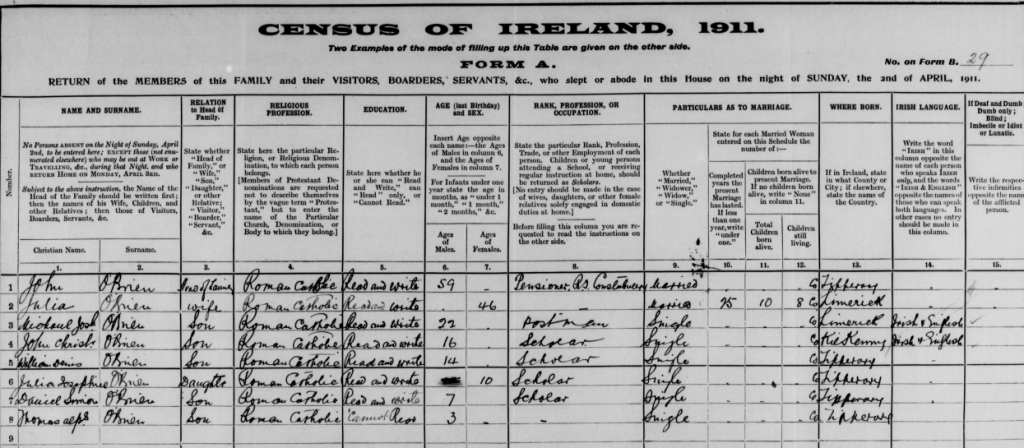
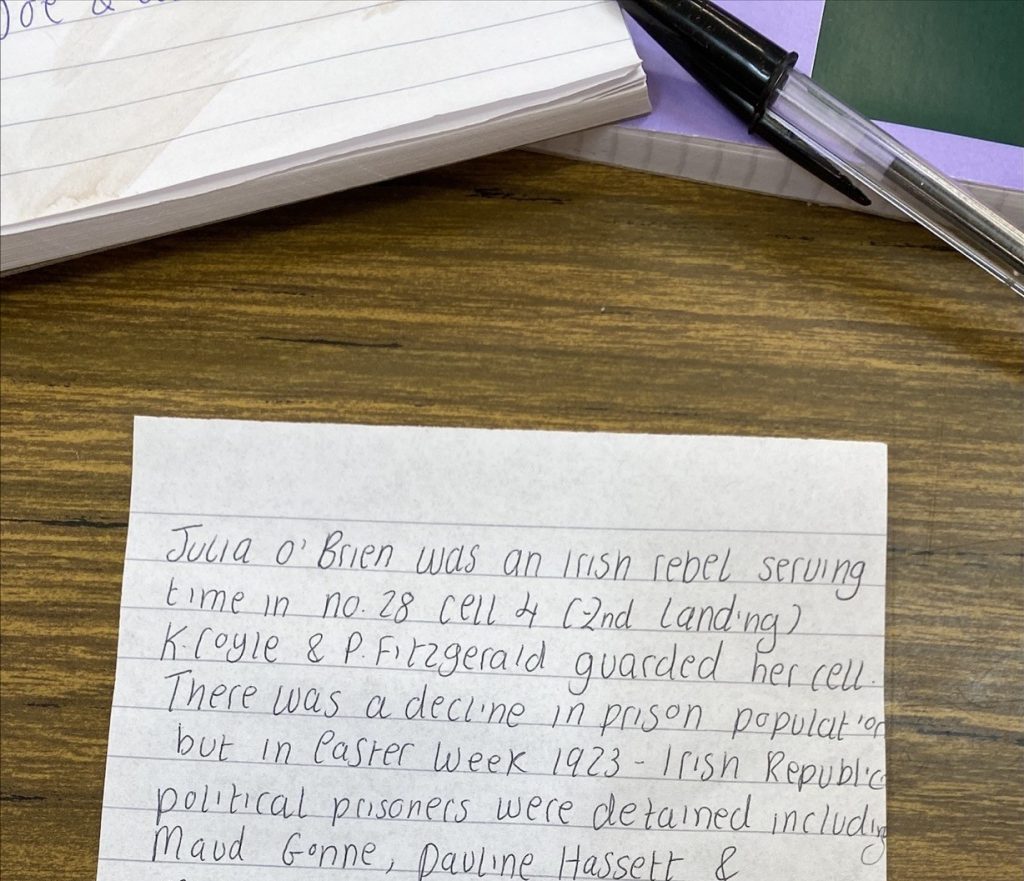
Julia O’Brien was the 28th prisoner to enter Kilmainham Jail according to official documents. The official record states that she was released on the 25 July 1923. Hannah Moynihan wrote that before she left, she was given a ‘big send off.’
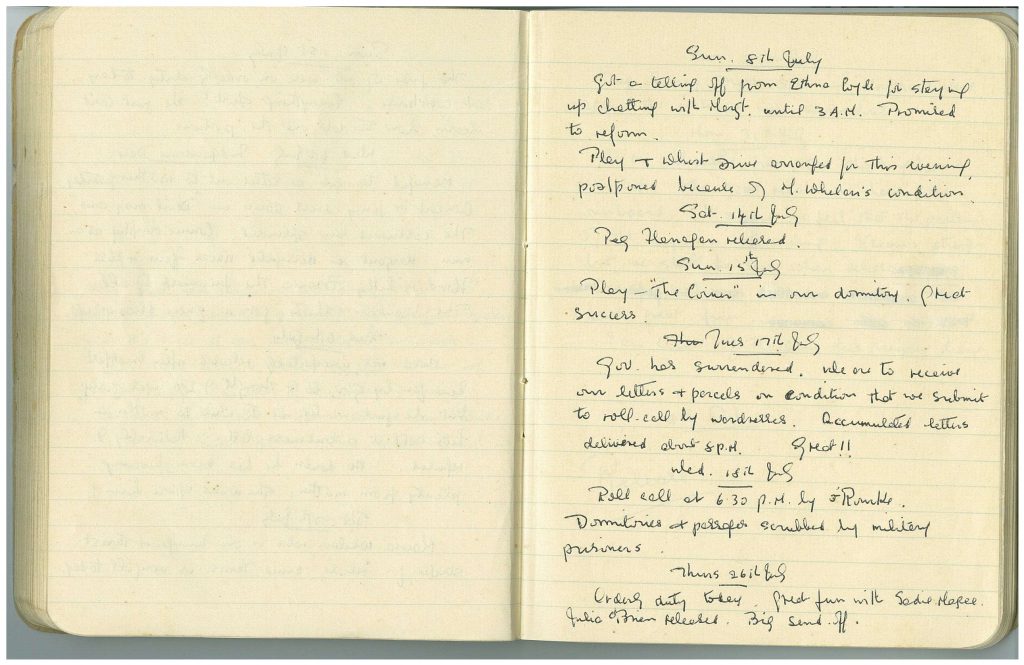
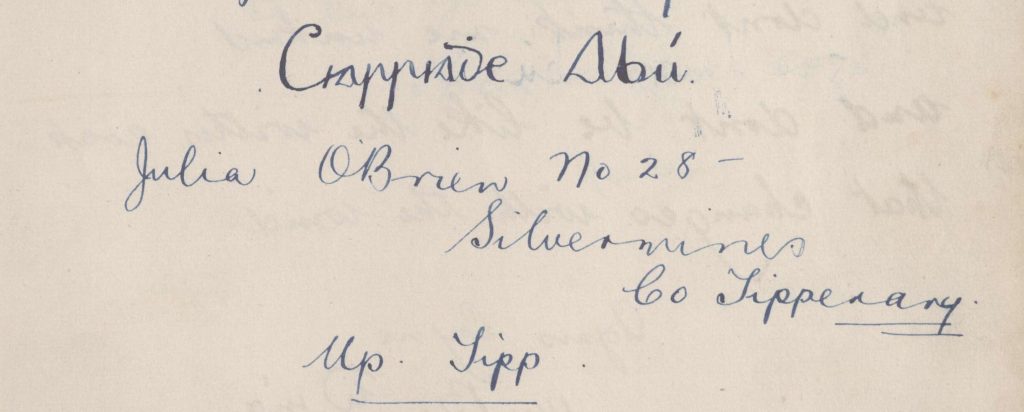
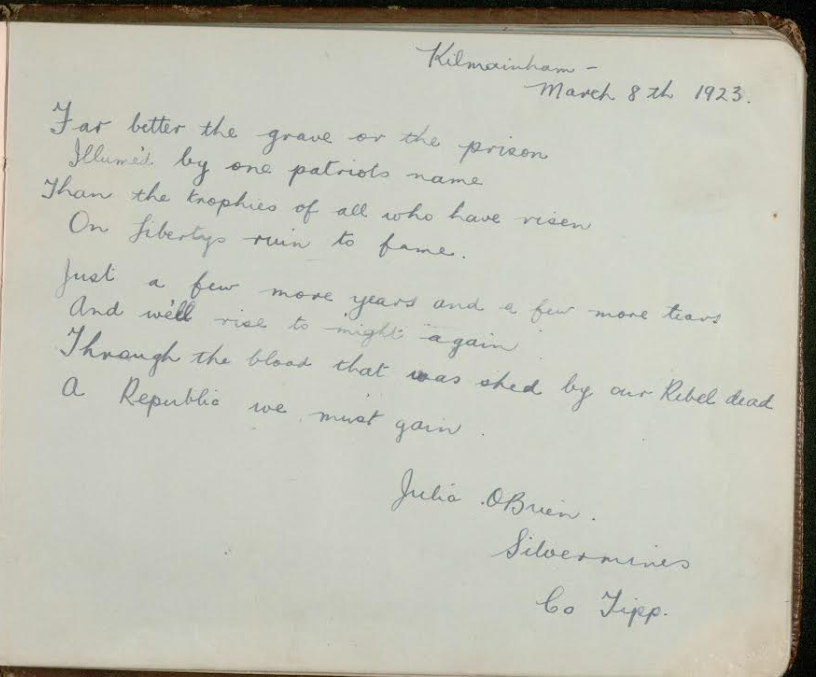
On March 8 1923, when she was in Kilmainham Gaol, Julia wrote in Nellie Fennell’s autograph book. Nellie was from Limerick city.
Far better the grave or the prison
Illustrated by one patriot’s name
Than the trophies of all those who have risen
On Liberty’s ruin to fame.
Just a few more years and a few more tears
And we’ll rise to might again.
Through the blood that was shed by our rebel dead
A Republic we must again.
Later, when she was in prison, Julia signed Lily Gleeson’s autograph book, on 22 July 1923 in the North Dublin Union. Lily was from Dublin.
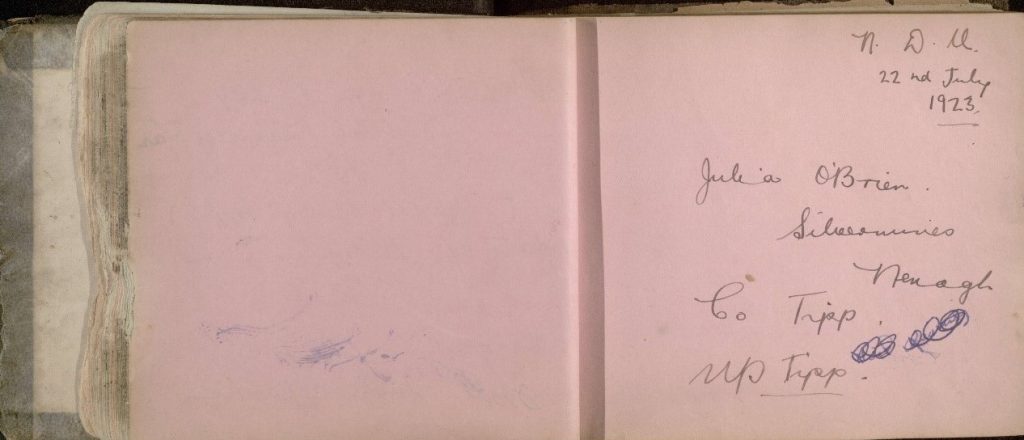
Madge Heffernan
Gladstone Street Clonmel and Barrowstown
Research by Cara Patterson and Lucy Mahony
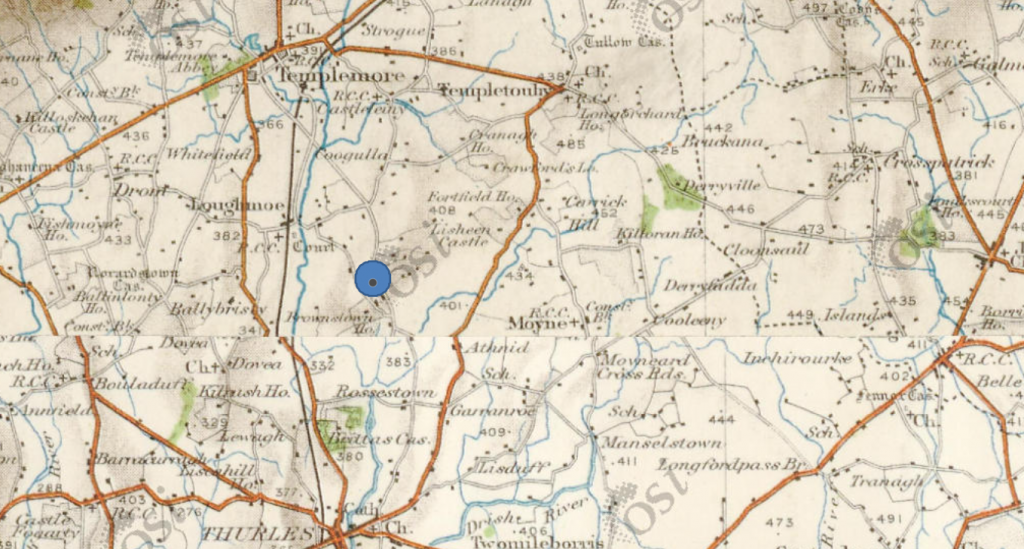
© Tailte Éireann – Surveying.
Cara Patterson and Lucy Mahony researched Margaret Heffernan, called Madge, of Barronstown. They found that she was one of eight children born to Thomas and Alice Heffernan. According to the marriage registry, her father had married at 41, his wife was 11 years younger than him. The 1901 census showed that Madge had six sisters and one brother, William. The family were living in a 4 roomed house, with seven out-buildings.
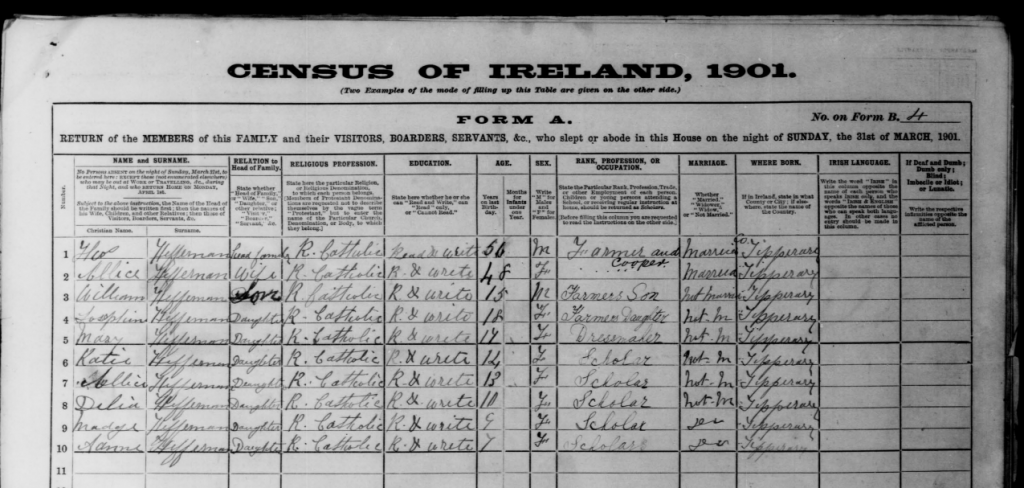
By 1911, when Madge she was 19, her three older sisters Mary, Delia and Alice were no longer at home.
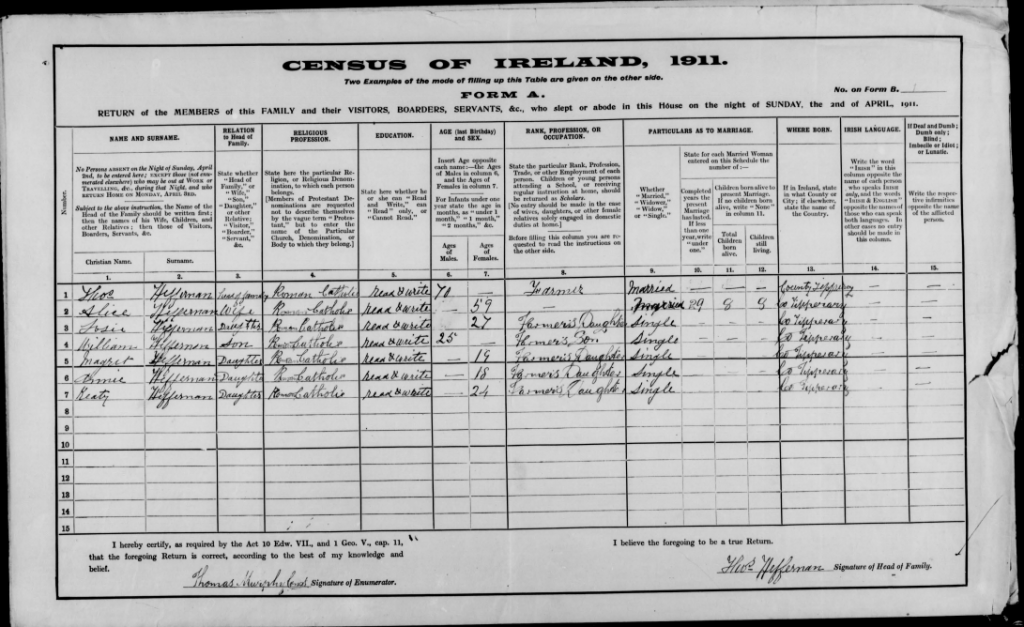
In her application for a military pension, (which she did not get), Madge stated that she was a member of Cumann na mBan, having joined in 1917 when she was 21. She was active from April 1917 until the 30 September 1923, when she was released from prison.
A member of Clonmel Branch, she was also attached to the 3rd Tipperary Brigade under the command of Sean Duffy and Allen James Hickey. She was under the command of the IRA. She said in her application for a pension ‘I was involved in dispatch work, intelligence work.’
Her file states she was under the command of Mary Cooney, who was in charge of Cumann na mBan, Clonmel.
She remained working for the independence movement when she moved to County Limerick. While she was in Pallas Green (also given as Pallas) in County Limerick, she was employed in Messrs Cunningham’s which was close to her family home. When she was there, she worked with the East Limerick Brigade.
She lost her job and returned to Clonmel.
During the Civil War, she joined Anti-Treaty forces, who opposed the National Army, and continued the same work in intelligence and dispatch. She also transported arms and ammunition from Dublin to Limerick Junction, which is, despite its name, is in County Tipperary.
One of the IRA men – Andrew Kennedy, part of the flying column -wrote a letter for her, stating that she was ‘well known’ to him, during ‘the time of the IRA activities from 1917-1923.’ This was the time of the war of independence and civil war. He wrote that Madge gave ‘outstanding services as intelligence agent’. She ‘carried dispatches and verbal messages between Limerick Junction and headquarters in Tipperary.’ You can view her pension record here.

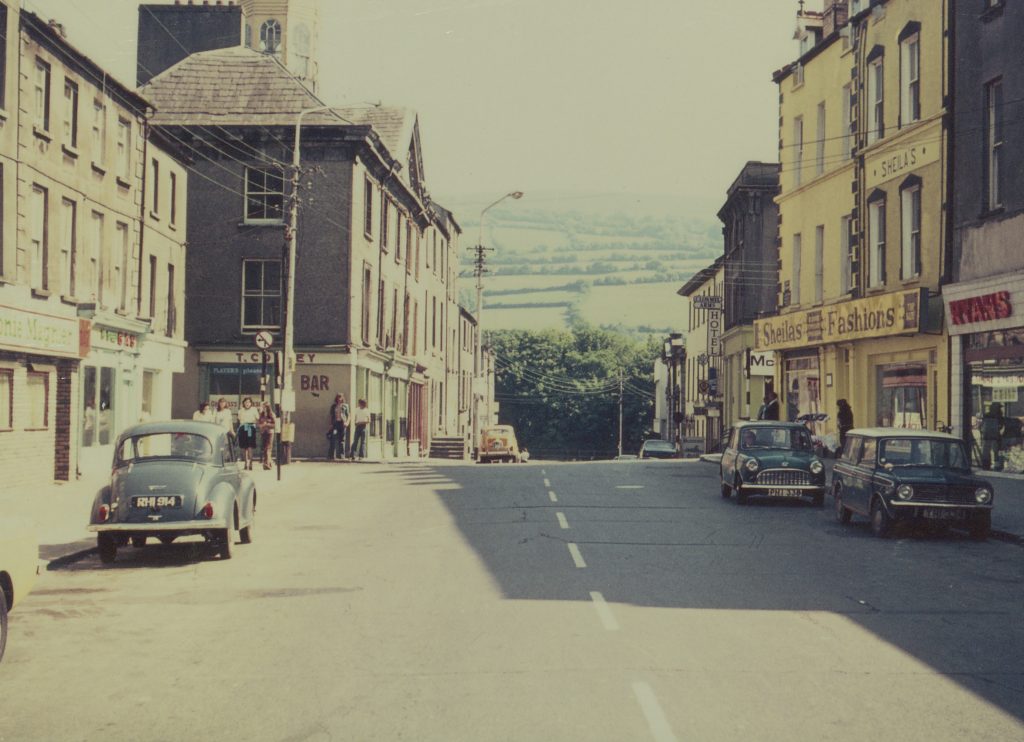
In 1923, Madge was still a member of Cumann na mBan. She opposed the establishment of the Irish Free State and was imprisoned in 1923, in Kilmainham Gaol.
The autograph books shows that she was also in the North Dublin Union, which had been converted to a detention center for ‘suspect’ women.
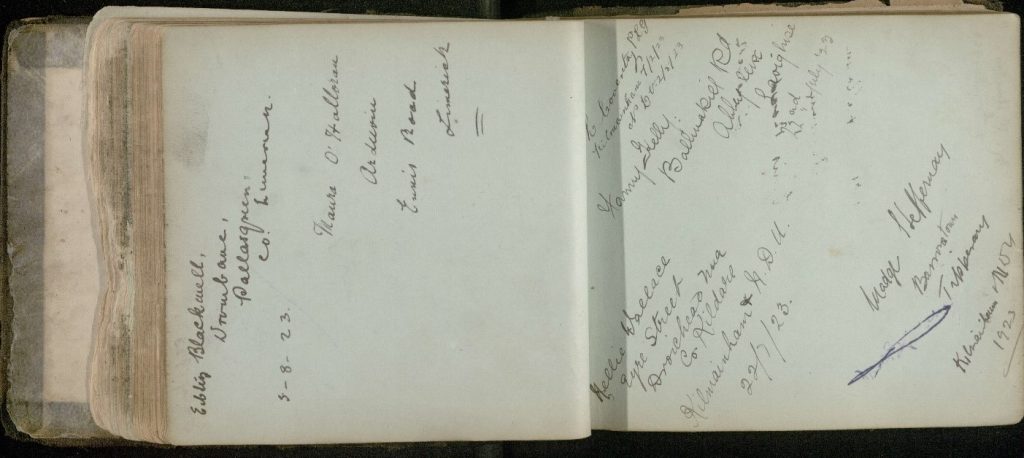
Cara Patterson and Lucy Mahony concluded that Madge must have been in a lot of trouble as after she was in Kilmainham Gaol as she was sent to the North Dublin Union, which was a workhouse.
Madge was arrested in Clonmel in March 1923 when she was living in Gladstone Street.
There is a site called Clonmel.ie it details a number of businesses in Gladstone Street. When Madge lived there in 1923, the shops on the street included a number of drapery shops – it is very likely she would have lived in a flat in rooms over one of the shops on this street.
Unfortunately Madge did not give a street number when she signed the autograph books. This was most likely because there were often confiscations of autograph books and other documents, and if her address was listed it could have been raided.
Mary’s pension record confirmed that she spent six months in Kilmainham Jail. We know that she was in A Wing (the East Wing, new wing) and in the old wing, B Wing. The autograph books show she was also in the North Dublin Union.
She wrote in Mary Twamley’s autograph book:
From freedom’s cause in freedom strife
Can mortal sender more than life
Can patriot praise with purpose high
For more than his land to die???
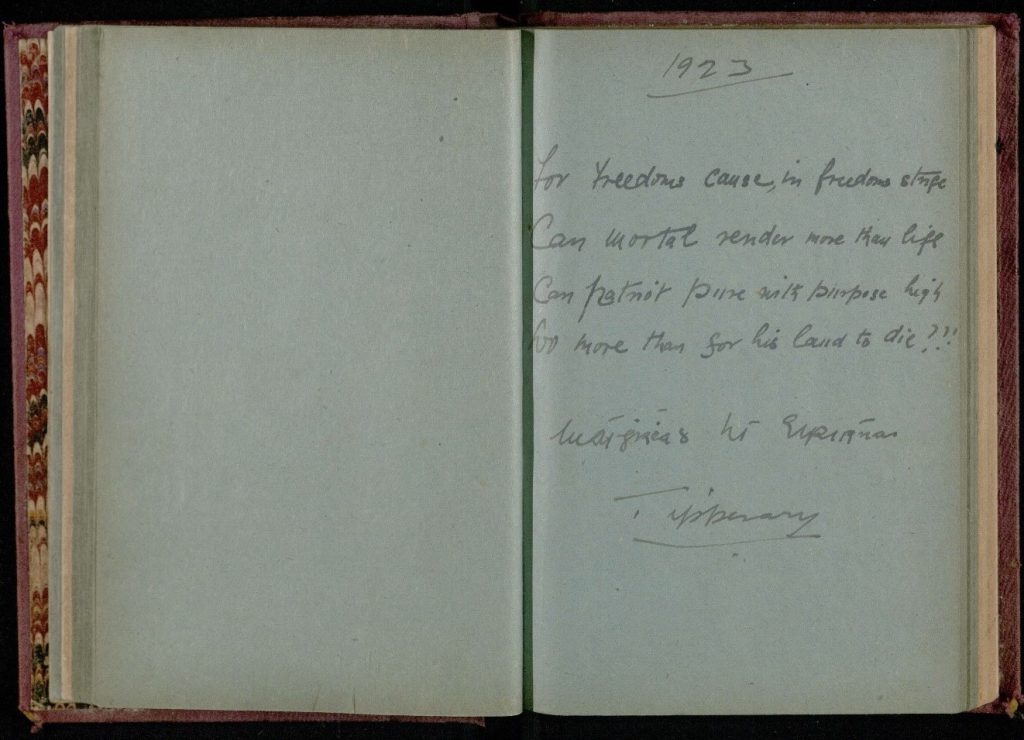
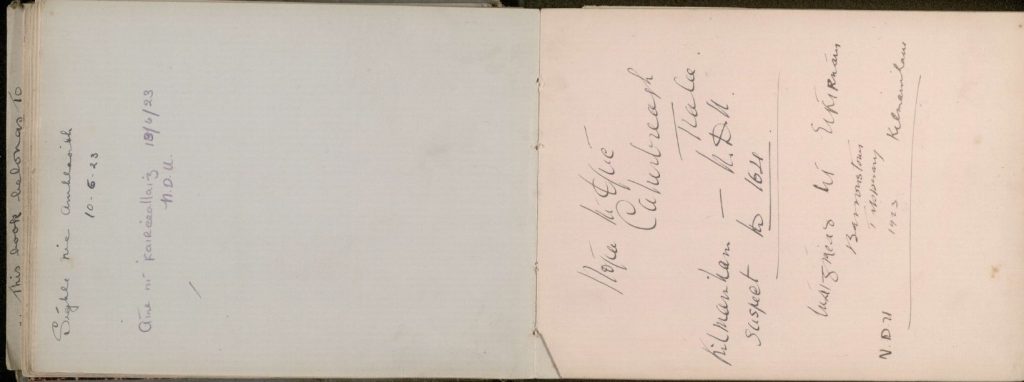
This is an autograph where she signed her name in Irish, she used the name Maíréad in the autograph book of Nellie Fennell (above) from Limerick and also Nan Hogan (below) from Cratloe, County Clare. Nan Hogan died shortly after she was in prison.

Madge must have been friendly with lots of different women from different places while in jail, we don’t know if she stayed friends with them.
The students found out from her Military Pension record that Madge was not married and that she lived her later life in Morton Street.
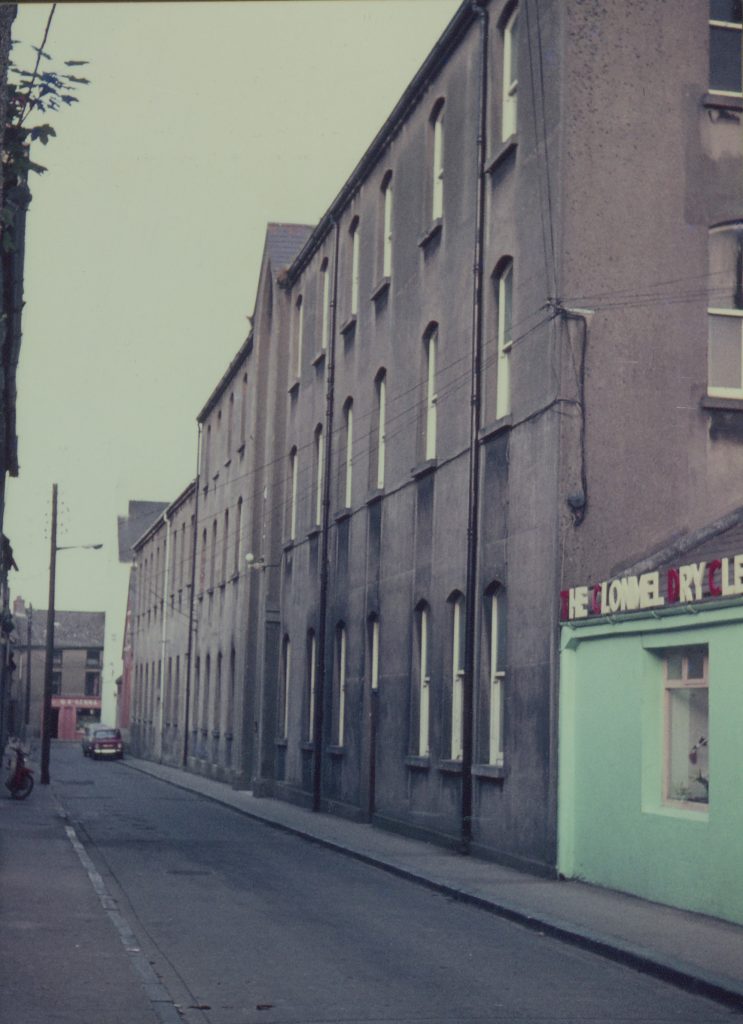
In the 1950s, Madge lived at 29 Morton Street Clonmel is situated at the back of the convent, on the road behind Gladstone Street. There, she received the letter informing her that her pension application for her service was unsuccessful.
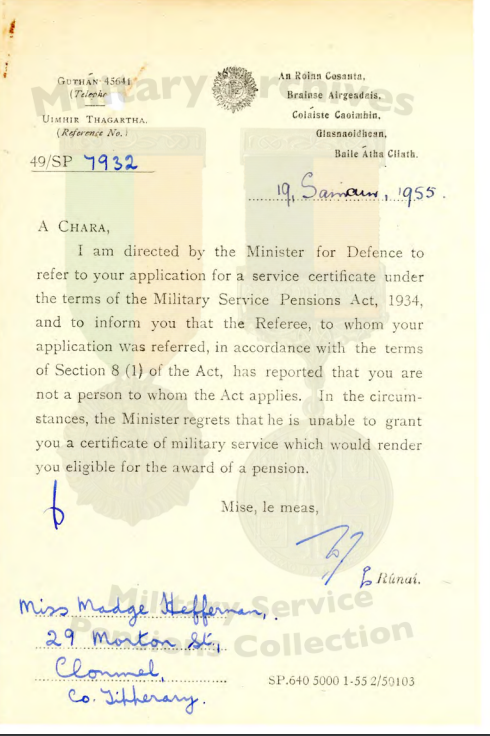
Her pension record reveals what she did after she came out of prison. She went to work as a housekeeper for the Burke family around the corner from Morton Street at the Lodge. We know that she worked there for over 30 years, from the 1920s onwards. The lodge’s location has not changed that much since Madge would have known it, – the church, the old walls and the large garden in the centre of the town are still there today.
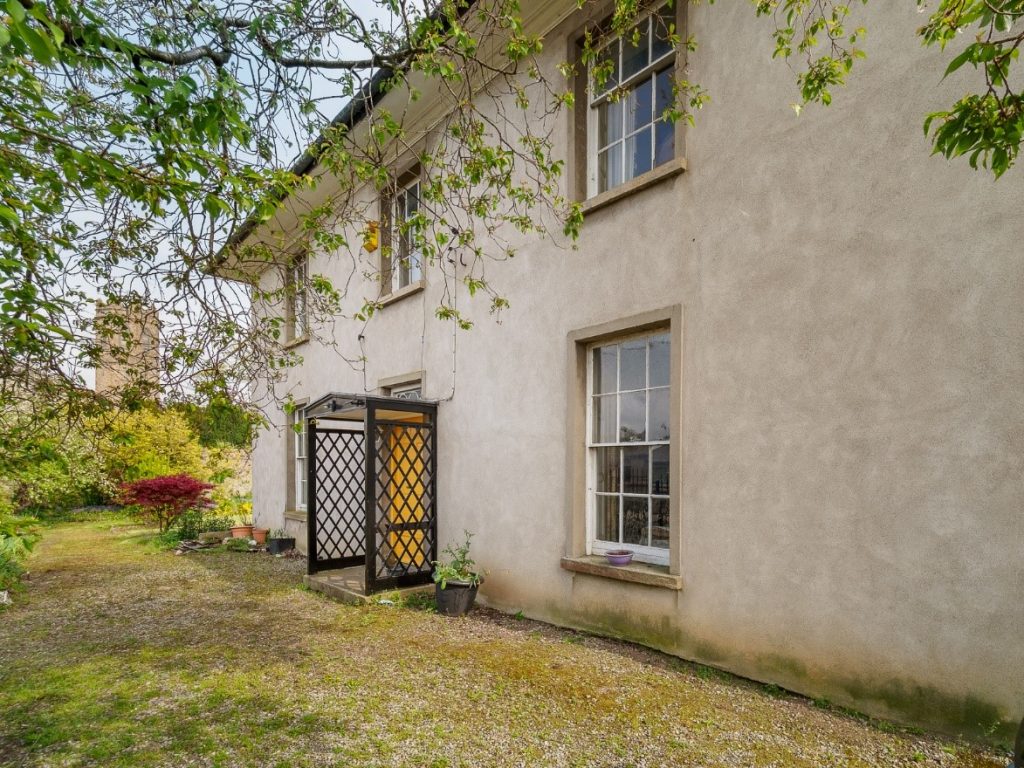
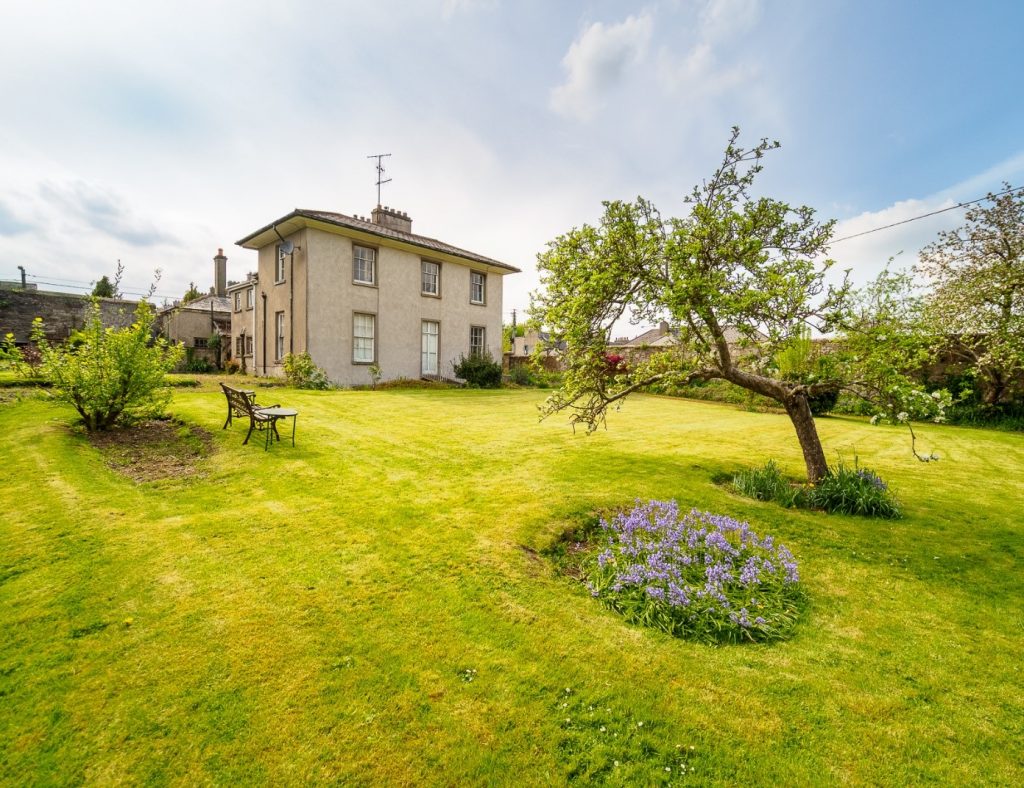
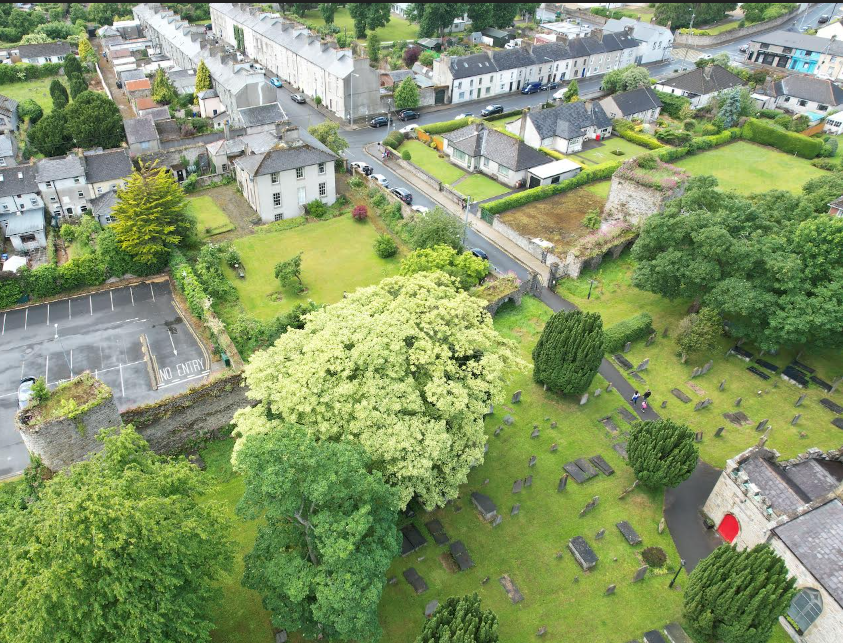
Her employer Ulick Burke did his best to help her, as Madge had worked for his family from the time he was a child. A letter from him can found in her pension file, where he wrote:
Miss Heffernan is a person that was never in the movement for any material purpose, and she is now reaching the autumn of her days, (she was 59 years old) I think that a small pension should be granted to her in recognition of the services she rendered.
He also wrote:
By way of introduction, I am the brother of Denis Burke in the Senate.
The House of the Oireachtas website shows that Denis Burke was a Fine Gael Senator from 1948-1961. In 1957 D.E. Burke was Mayor of Clonmel.
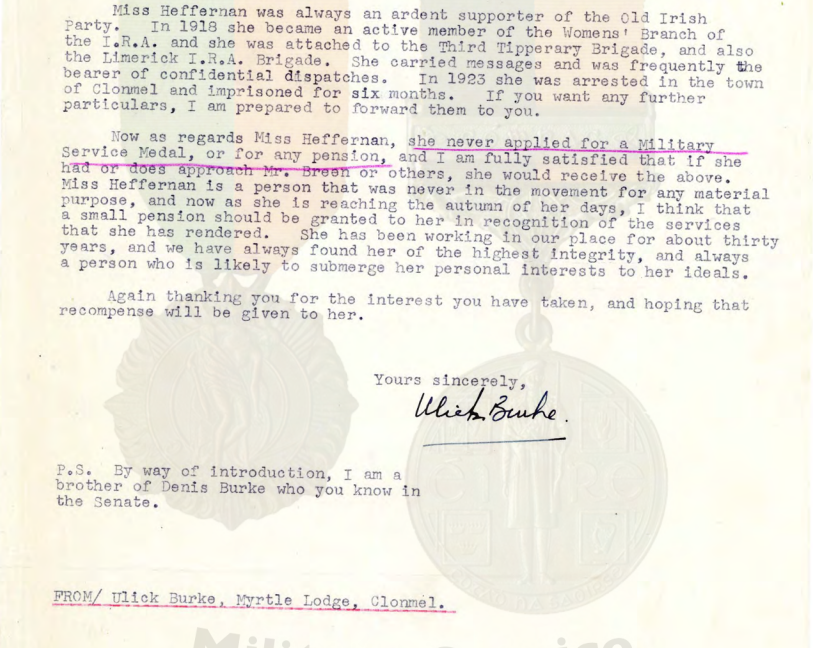
May Keogh
17 Parnell Street Clonmel
The students found that it is difficult to find information on many of the women. Rachel O’Dwyer, Jenna Hayes, Chloe Hickey, and Eabha Murphy, were presented with May Keogh to research. There were several different May Keogh’s and M Keogh’s but they couldn’t confirm if any of them were May Keogh of Clonmel. In the list submitted by Mary Cooney about the members of Cumann na mBan in Clonmel and its environs, she only included a few names. She did not include May in this list. There is no record of May Keogh seeking a pension.
Kilmainham Gaol’s records confirmed that a May Keogh was in Kilmainham Gaol in April 1923 and signed her name next to Mary Cooney, also from Clonmel. She stated that she was with the 5th Battalion, 3rd Tipperary brigade.
By June, May had been transferred to the North Dublin Union. We know this because on 13 June 1923 she signed Fanny Kelly’s autograph book.
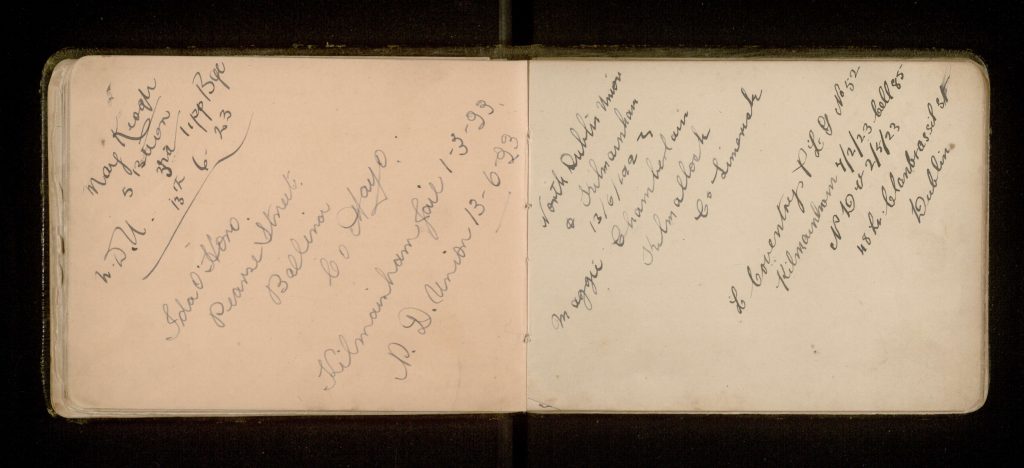
There is an official record in Military Archives, that Miss M Keogh, number 3176, was released from North Dublin Union on 25 September 1923. Once she was released there were 196 prisoners remaining in the NDU.
The Military Pension Records show (Mrs) M Keogh, writing from Galbally, Tipperary, on 6 November 1936 to the Minister of Defence, asking him to forward her an application for a Military Services Pension.
In 1936 Mrs Keogh submits an application from Galbally Garda Station, County Tipperary – a village on the border of County Limerick and County Tipperary, which is now in County Limerick.
Maureen Keogh states that during the Civil War she was imprisoned in Mallow Military Barracks, Cork County Jail and Kilmainham Gaol. She also states that while she was in Kilmainham she was on hunger strike for ten days.
Conclusion
This workshop gave the participating students an opportunity to develop practical and useful tools to help them in researching their topics for their Leaving Certificate research study and that they might discover more women, whose stories have yet to be told.
Mná100 would like to thank all the students from Presentation school, Clonmel, who so enthusiastically participated in the workshop, especially their Teacher Margaret O’Mahoney for help and support. We wish them well in their future studies.
Mná100 would also like to thank Tipperary County Council and Tipperary Library Services for their help in putting the workshop together as part of Tipperary’s Decade of Centenaries programme, in particular Róisín O’Grady and Paul Devane. We would also like to thank Historian John Flannery who assisted with research – you can read his research and biography on Julia O’Brien here. Thanks also to Archivist Aoife Torpey and Brian Crowley in Kilmainham Gaol Museum.
The links to the main resources that the students used for their research are listed below.
